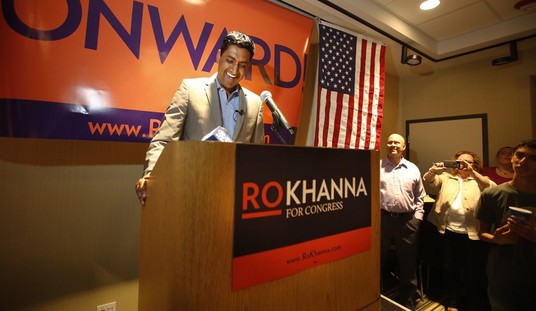D.C. Circuit Court Judge Laurence Silberman is making headlines for his frank assessment of the American press, specifically mentioning The New York Times and The Washington Post. He exploded on both of the news outlets, as well as including the news section of the Wall Street Journal, in a partial dissent of a libel case. His opinion reads as though this has been a long time coming and he finally snapped.
The case isn’t a high-profile case by any measure. It centers on a report published in 2018 by Global Witness Publishing that accused Liberian government officials Christiana Tah and Randolph McClain of accepting bribes from Exxon. Tah and McClain sued Global Witness Publishing for defamation and their claim was dismissed Friday. Included in his dissent is Silberman’s argument that the Supreme Court should take a second look at a landmark ruling. The ruling in the 1964 New York Times v. Sullivan case – one that grants media broad First Amendment protections from being sued by public officials – should be revisited given how biased the press has become in the last fifty years.
Silberman describes one-party control of the press and its threat to democracy.
“[N]ew considerations have arisen over the last 50 years that make the New York Times decision (which I believe I have faithfully applied in my dissent) a threat to American Democracy,” he writes. “It must go.”
Silberman, a Reagan nominee and senior judge on the D.C. Circuit Court since 2000 continued, “The increased power of the press is so dangerous today because we are very close to one-party control of these institutions,”
Age has its privileges and at age 85 it sounds like Judge Silberman is ready to let loose against the direction of press coverage in today’s media.
“Although the bias against the Republican Party—not just controversial individuals—is rather shocking today, this is not new; it is a long-term, secular trend going back at least to the ’70s,” Silberman wrote. “Two of the three most influential papers (at least historically), The New York Times and The Washington Post, are virtually Democratic Party broadsheets. And the news section of The Wall Street Journal leans in the same direction. The orientation of these three papers is followed by The Associated Press and most large papers across the country (such as the Los Angeles Times, Miami Herald, and Boston Globe). Nearly all television—network and cable—is a Democratic Party trumpet. Even the government-supported National Public Radio follows along.”
Silberman points to social media and the way Silicon Valley controls the flow of information to its followers. For example, he points to how the NY Post’s story of Hunter Biden’s computer was suppressed. Some polling shows that voters now say if they had known about that story they likely would not have voted for Joe Biden. Silberman makes the point that, clearly, Silicon Valley was in the tank for Democrats and Joe Biden in the last election cycle. He also addresses the push to muzzle networks not under “Democratic Party ideological control.”
“It is well-accepted that viewpoint discrimination ‘raises the specter that the Government may effectively drive certain ideas or viewpoints from the marketplace,'” Silberman said. “But ideological homogeneity in the media—or in the channels of information distribution—risks repressing certain ideas from the public consciousness just as surely as if access were restricted by the government.”
“It should be borne in mind that the first step taken by any potential authoritarian or dictatorial regime is to gain control of communications, particularly the delivery of news. It is fair to conclude, therefore, that one-party control of the press and media is a threat to a viable democracy,” the judge continued. “It may even give rise to countervailing extremism.
“The First Amendment guarantees a free press to foster a vibrant trade in ideas. But a biased press can distort the marketplace. And when the media has proven its willingness—if not eagerness—to so distort, it is a profound mistake to stand by unjustified legal rules that serve only to enhance the press’ power.”
The judge is not wrong. The efforts of liberal publications have only been emboldened in the last decades as their power has grown. Any conservative who has been paying attention to news coverage can see the one-sided coverage of news events. Many news anchors on the major broadcast networks now insert personal opinions into the stories they are reading during the nightly news. Straight, impartial journalism is dead.
In 2008, President George W. Bush awarded Silberman the Presidential Medal of Freedom. It is not surprising that Silberman cites Supreme Court Justice Clarence Thomas in his dissent in this case. In an opinion two years ago on the 1964 New York Times v. Sullivan case, Judge Silberman wrote that “Justice Thomas has already persuasively demonstrated that New York Times was a policy-driven decision masquerading as constitutional law.”
Silberman includes NPR, too, which is also obvious to conservatives. “Nearly all television—network and cable—is a Democratic Party trumpet. Even the government-supported National Public Radio follows along.” Our tax dollars support a radio network that sounds like the propaganda wing of the Democrat National Committee. Thirty years ago he delivered a speech decrying a tendency of liberal judges to bow to the press by not issuing tough decisions that may be reported unfavorably.
Speaking to the conservative Federalist Society in 1992, the judge branded such fears as the “Greenhouse effect,” taking the name from the New York Times court reporter of that era, Linda Greenhouse.
Silberman is clearly over the target, so to speak, as liberal publications prove his point in their write-ups on his dissent. Esquire claims Silberman has gone “full Hannity”. Slate calls his opinion “a rant”.
Let the deniers squawk. Silberman is correct in his assessment about press coverage and its harm to American democracy. Conservatives can thank him today for speaking out.








Join the conversation as a VIP Member